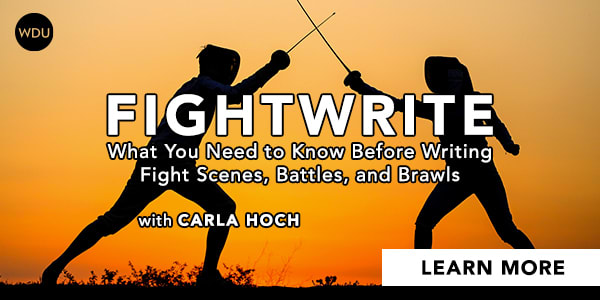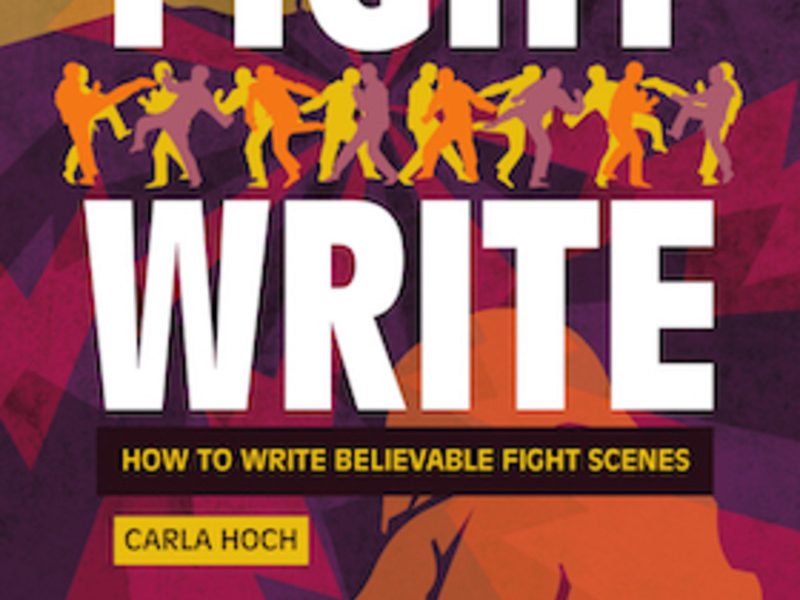The Why of the Fight: FightWrite™
In this series on how to write fight scenes start to finish, we have looked at what fight scenes can do for your story, how the setting impacts the story and how to find weapons just about everywhere. What I haven’t gone over is truly what I should have written about right out of the gate. The only reason I didn’t is because I thought I had written on this two years ago. But I didn’t and I’m glad because its placement in this series is best. More important than where a fight takes place, what weapons are used or even who is involved is one thing: why. Nothing has a greater impact on a fight than why it is taking place.
(Using Weapons of Opportunity: FightWrite™)
Why anyone does anything is everything. Getting out of bed to go to work is a wholly different enterprise than getting out of bed because you hear your dog being sick. Why? Because the reason is different. Even if you love your job, you won’t fly out of that bed like you would upon hearing your pet summon gastric juices. The latter is a very “spring loaded” situation. You’re the same person, you’re still just getting out of bed. The difference is the why.
Change the why and the why changes you.
How the Why Impacts the Fight
Nothing has a greater impact on a fight than why it is taking place. The same is true when crafting a fight scene. The whys of a fight all work together to create a framework on which to build your scene. Here’s how:
- The whys determine what is at stake.
- The stakes determine and explain the intensity of the action.
- That intensity determines speed and style of combat.
- The whys can also turn every one of those on their ears by imparting advantage and disadvantage and making a disparity of size and skill irrelevant.
What Is at Stake
Knowing what is at stake explains why a character is doing what they are doing and can help the reader connect with the character. No, your reader may not know what it is to take a sword in hand and run headlong into a battle. But they understand fear. They understand pain. They understand loss. And they likely understand wanting something so badly they are willing to risk feeling all of those. As soon as your reader connects to the character’s why, you bring your reader into the fray alongside them. When the reader is fully in the scene, with everything there is to gain or lose laid out in front of them, they will have a better understanding of the intensity of the fight and become more invested in the outcome.
IndieBound | Bookshop | Amazon
[WD uses affiliate links.]
Intensity
Intensity in fighting is a lot like volume in a movie. When there’s nothing much taking place, the volume is normal. But you hit an action scene and everything gets really loud. It’s like that in fighting. When I am warming up and doing drills, my intensity is low. When I am sparring, the intensity goes up a bit. It’s only middle volume though because what is at stake is just me making use of my knowledge. Technically, there’s no losing in sparring, but I am both attacking and defending which makes me dial it up a bit. When I step onto the mat to compete, I am facing down an opponent who wants to win as much as I do and is willing to hurt me to do it. The volume is way up. And then, if I leave the arena and am assailed in the parking lot, I will fight with an even greater intensity than I did for a medal. I will push that volume, as the band Spinal Tap said, “up to 11.” In every one of those instances, the intensity/volume goes up because of the stakes.
Speed and Style of Combat
The why of a fight and the stakes at play also affect speed and style of combat. Generally, the style of attack determines the speed of the response. But the stakes may also impact speed. Your character may become a whirling dervish of terror in the boxing ring. But that same character will likely freeze if held at gunpoint. Why? Because the stakes of punching a willing opponent are much different than taking on a weapon. If the assailant is disarmed, your boxing character may become faster than they ever have been in the ring because their life is on the line.
Advantage/Disadvantage
To understand how the why of a fight can impart advantage or impose disadvantage, you have to consider that there is more than one why in the fight. Every character in a fight has their own unique reason for combat. And, it’s not just about winning. It’s about what winning means to that character. Just plain wanting to win isn’t a great why. Don’t fall for the “losing isn’t an option,” motto. Losing is always an option. Yes, why someone is fighting will impact how willing they are to do whatever it takes to win, and that can be an advantage. But an advantage isn’t the same thing as the advantage.
That said, the most dangerous person is always the more willing person. If my assailant and I both have a knife, the one more willing to use it is more dangerous. It doesn’t matter that the attacker is bigger, faster and stronger. Their hesitancy to use the knife, which is based on their own unique why, makes their inherent advantage a detriment. Because, guess what? Bigger body means larger target for me.
Every Will Has a Why
Willingness to engage is anchored in a why. That why may be based in the moment or tethered to the past. If I get into the ring with a professional heavy weight boxer, I’m as good as dead. That fighter could literally break my neck. I might die and will definitely lose UNLESS their why gives me the advantage. If they are being paid to lose, I will win. If they don’t want to hurt me, I will win. If something about me ignites a childhood trauma within them that leaves them frozen, I will win.
Don’t just focus on the why of the hero. Remember, the only difference in a hero and a villain is who is telling the story. The villain has a why that is just as compelling and impacts their manner of fighting too. Every will has a why. And every why can change the will.
****
Nothing impacts a fight scene more than why it is happening. Before you throw your character headlong into the fray, consider why they are in it. What are the stakes? Those stakes don’t simply impact the intensity, speed, and style of combat, they also pull your reader ringside. And don’t assume that every fight that same character is in will be fought the same way. The character may be the same, but if their reasoning for fighting changes, that reasoning will in turn change them.
Change the why, and the why changes you.
Next month, we will look at choosing an injury goal and how everything we have covered in this series impacts that goal. What’s an injury goal? It’s everything!
Until the next round at FightWrite on the WD blog, get blood on your pages.

Are you ready to dive in to writing your next fight scene? Join expert instructor Carla Hoch in this video course to learn the three most important points for writers to consider before writing fight scenes, battles, and brawls! Using historical examples and real-world expertise, Carla will guide you through the entire process of determining why, where, and who—essential elements for the writer to understand in order to make the scene work properly.



